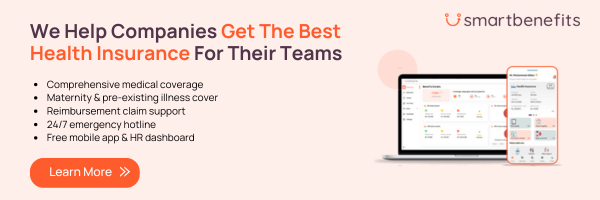Imagine a situation where your payroll team has carefully deducted provident fund contributions each month, ensuring every rupee is accounted for. But at year-end, some employee balances don’t add up, investment returns aren’t clear, or the trustee report is delayed.
These are red flags that HR and payroll professionals across Pakistan increasingly face when managing provident fund (PF) schemes.
For many organizations, the provident fund is more than a retirement benefit; it’s a symbol of long-term commitment to employees. But when transparency breaks down or funds are mismanaged, the trust that underpins this system starts to erode.
Why Transparency in Provident Fund Management Matters
Transparency means employees can see where their money goes, from monthly deductions to employer matching, and from investments to annual interest earned. It’s about giving employees visibility and confidence in their long-term savings.
For HR and payroll professionals, maintaining transparency has three key benefits:
- Builds employee trust: Workers feel confident about their savings being managed responsibly.
- Ensures compliance: The Provident Funds Act, 1925, and other labour laws in Pakistan require proper recordkeeping.
- Supports your employer brand: A transparent benefits program reinforces that your company genuinely cares about employee well-being.
If your organization has a fund in place but faces a lack of awareness, a good starting point to help employees understand it better is our earlier article, Understanding the Benefits of a Provident Fund: A Guide for Pakistani Employees. It explains how PFs work and why transparency is vital for both employees and employers.
Common Mismanagement Issues in Provident Fund Contributions
Many organizations face mismanagement stemming from poor governance, weak oversight, or communication gaps.
Some of the most frequent challenges seen in Pakistani workplaces are:
1. Delayed or Missing Contributions
It’s surprisingly common for payroll deductions to be made on time while the employer’s matching share is delayed or never transferred to the fund. Over time, this creates discrepancies in the PF account and complicates audits.
2. Incomplete or Inaccurate Statements
Employees should receive annual PF statements that show their opening balance, monthly contributions, returns, and closing balance. When this information isn’t shared, employees are left guessing — and HR ends up dealing with unnecessary queries and complaints.
3. Weak Trustee Oversight
In most organizations, provident funds are managed by a board of trustees. With poor oversight or unclear fund governance rules, misuse of funds can occur. A 2025 audit at a state-run organization uncovered massive discrepancies and alleged misappropriation in its PF accounts, a stark reminder of what happens when accountability is missing.
4. Unclear Investment and Return Policies
Employees often question why their PF balance isn’t growing as expected. The issue usually lies in poor investment strategies or hidden charges. Transparent reporting of fund returns and expenses helps both employees and HR verify the fund’s health.
5. Lack of Communication and Employee Awareness
Sometimes, mismanagement isn’t deliberate — it’s the result of poor communication. When employees don’t understand how their PF is managed, small issues quickly escalate into mistrust.
The HR and Payroll Role in Promoting Transparency
From a payroll and HR perspective, your team plays a pivotal role in ensuring PF transparency. You are the link between the employee, the employer, and the trustees. Here’s how your function directly impacts fund governance:
- Employee confidence and retention: Transparent benefits administration boosts employee loyalty.
- Regulatory compliance: Proper documentation and timely reporting reduce legal exposure.
- Brand reputation: PF mismanagement can tarnish your organization’s reputation quickly.
- Operational efficiency: Coordinating payroll deductions and fund reconciliation improves accuracy and accountability.
In short, when HR and payroll work together on provident fund management, you create a transparent, compliant, and employee-trusted benefits ecosystem.
Practical Steps to Avoid Mismanagement
Here are a few practical measures HR and payroll professionals can adopt to prevent PF-related issues:
- Set up monthly reconciliations: Verify that deductions and employer contributions match and are deposited on time.
- Ensure annual statements are shared: Provide employees with updated PF summaries each year.
- Review trustee governance: Confirm that trustees meet regularly, investments are approved, and reporting standards are followed.
- Communicate openly: Share updates about fund performance or policy changes in town halls or newsletters.
- Integrate PF tracking into payroll software: Automate reporting to minimize manual errors.
- Educate your workforce: Encourage employees to review their PF statements regularly and raise concerns early.
Transparent communication, paired with regular audits, not only protects the organization but also enhances its image as a responsible employer.
What Happens When Transparency Is Ignored?
The fallout can be severe where transparency is lacking. Employees lose faith in management, auditors flag irregularities, and the company risks reputational damage. In worst-case scenarios, mismanagement can lead to financial losses or even legal action.
No organization wants its name associated with missing employee funds or unverified balances. Maintaining clear, accessible, and timely PF records is not just a compliance requirement — it’s an ethical responsibility.
Final Thoughts
At its core, the provident fund is an assurance from the employer to their employees to provide long-term financial security. As payroll and HR professionals, you are the custodians of that promise.
By prioritizing transparency, maintaining timely contributions, and communicating proactively, your team ensures the PF remains a trusted benefit rather than a source of grievance.
For more insights on strengthening your employee benefits strategy and linking it with business outcomes, you might find our blog on Metrics and Methods for Measuring the ROI of Employer Branding Initiatives a valuable read.

Sadia Zaheer holds a Masters in Business Administration from IBA, Karachi. After working in several financial institutions in Client Management, Corporate Lending, Islamic Banking and Product Management she jumped careers to pursue a career in writing.
She is a Finance, Business and HR Development writer with four years of experience. She reads a lot and takes care of her multiple cats to remain calm.




